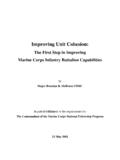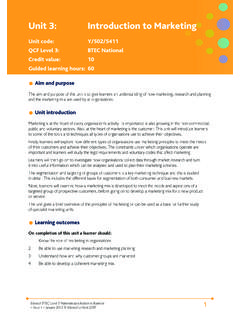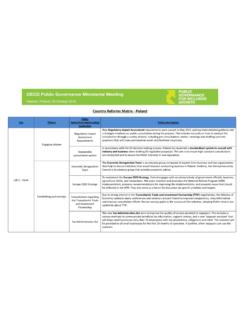Transcription of Community Cohesion: SEVEN STEPS
1 Community cohesion : SEVEN STEPSC ommunity cohesion : SEVEN STEPS1 1 Community cohesion : SEVEN STEPSC ommunity Cohesion: SEVEN STEPSA Practitioner s ToolkitThe Home Office is grateful to all those who contributed to the preparation of the bookletand in particular to:Chris Browne,Government Office for the East MidlandsClare Codling,London Borough of HarrowLeo Musyoki,Office of the Deputy Prime Minister Richard Page,Department of Education and SkillsCraig Russell,Oldham Metropolitan Borough CouncilCohesion and Faiths UnitMarch 2005 Community cohesion : SEVEN STEPS2 ContentsIntroduction 3 Step 1.
2 Leadership and Commitment5 Step 2. Developing a Vision and Values for Cohesion9 Step 3. Programme Planning and Management14 Step 4. Engaging Communities19 Step 5. Challenging and Changing Perceptions25 Step 6. Community cohesion and Specialist Areas30 Step 7. Ensuring Sustainability of Programmes35 Appendix: Pathfinder Contact Details38 Shadow Pathfinder Contact Details39 Community cohesion : SEVEN STEPSI ntroductionCommunity cohesion describes the ability of communities to function and grow in harmony together ratherthan in conflict.
3 It has strong links to concepts of equality and diversity given that Community cohesion canonly grow when society as a whole recognises that individuals have the right to equality (of treatment,access to services etc) and respects and appreciates the diverse nature of our communities. The LocalGovernment Association defined a cohesive Community as one where: there is a common vision and a sense of belonging for all communities; the diversity of people s backgrounds and circumstances is appreciated and positively valued; those from different backgrounds have similar life opportunities.
4 And strong and positive relationships are being developed between people from different backgrounds andcircumstances in the workplace, in schools and in Community cohesion Pathfinder Programme was established to encourage local authorities and otherstakeholders to develop new methods of integrating Community cohesion into mainstream service toolkit draws on the experiences of the 14 Pathfinders and 13 Shadow Pathfinders who took part in theprogramme (see Appendix for contact details). It provides details on the approach taken by the Pathfindersand Shadow Pathfinders to improve Community cohesion in their areas.
5 It contains case studies, practicaltips and hints on what works and what doesn t may have already seen the guidance for local authorities entitled Community cohesion An ActionGuide , published by the Local Government Association (LGA) and its partners. This drew on much of thePathfinders 18 month programme although it was published prior to the completion of this programme. Thistoolkit differs from the LGA publication in that although it will be useful for officers and members of local3 authorities, it has been specifically designed with practitioners from all agencies in mind - including all thosewho are charged with developing and improving Community cohesion , whether they are based in localauthorities, police forces, voluntary or Community groups.
6 The toolkit identifies SEVEN STEPS to developing Community cohesion , these are: Leadership and commitment Developing a vision and values for Community cohesion Programme planning and management Engaging communities Challenging and changing perceptions Community cohesion and specialist areas Ensuring sustainability of programmesThe toolkit also aims to provide practitioners with more in depth case studies and practical examples ofworking towards Community cohesion . Practitioners may like to use this guidance alongside the Home Officeinteractive CD ROM Pathfinder Toolkit, which features the SEVEN STEPS alongside case studies from thePathfinder projects, some of which are described in this guidance.
7 Community cohesion lies at the centre of what makes a strong, vibrant and safe Community . It is animportant issue for all of us, whether we live in the heart of a big city or in a leafy village. Attempts to createsustainable communities by regenerating areas and renewing housing markets need to consider the impacton Community cohesion in these areas. Community cohesion is about inclusion, making the effort to find outabout others, treating each other with respect and building good relations between different parts of thecommunity.
8 It is not just about race, but is equally about, for example, the relationships between young andold and between residents of different estates or residents within a single estate. It is not just the Pathfinders and Shadow Pathfinders who have been working on building cohesion . Manylocal communities have also been working to improve these relationships in their own areas as they toorecognise that by not working to build relationships and to develop a sense of Community , they would bestoring up problems for the future.
9 The cohesion agenda is equally relevant to a rural district as it is to a city council and so is this toolkit. Manyof the case studies are as applicable to the countryside as they are to the inner city. We therefore hope thatit will be used across the country in a variety of locations, to good information and guidance on Community cohesion is available on the Home Office website cohesion : SEVEN STEPSC ommunity cohesion : SEVEN STEPSStep 1:Leadership andCommitmentLeadership and commitment are essential to thedevelopment of Community cohesion .
10 Someoneneeds to take responsibility for managing anddriving through the changes required to build amore cohesive Community . However, there is nosingle leadership model to achieve this as differentmodels ultimately suit different areas. Some areastend to encourage high profile leadership with itsattendant publicity, whilst others find a lower keyapproach suits them better. What is clear however, is that someone needs toexercise leadership and demonstrate commitment(whether the local authority, the police, faith groupsor the voluntary sector) and that often once thishappens, other partners will come on Role of the Local Strategic PartnershipThe Local Strategic Partnership (LSP) is the obviousplace to start, with its responsibility for taking astrategic approach to Community planning and linkswith all local partners.







